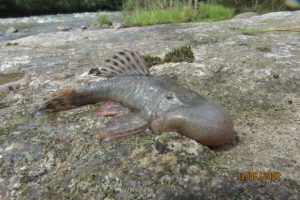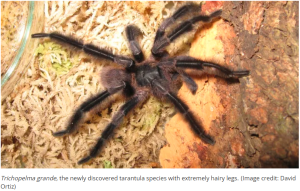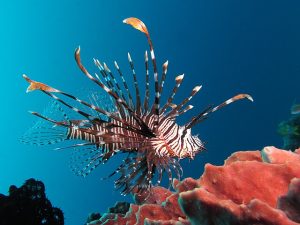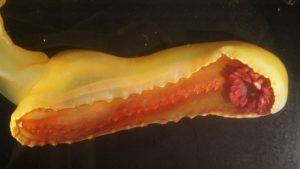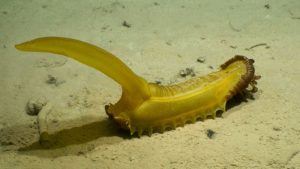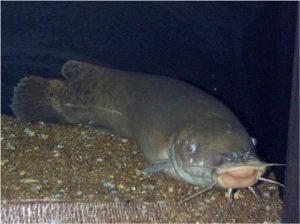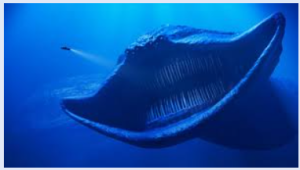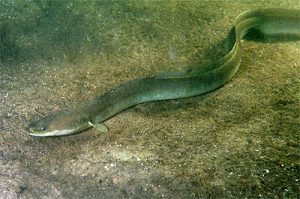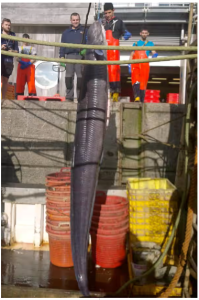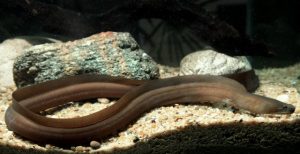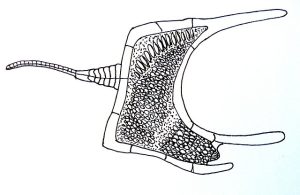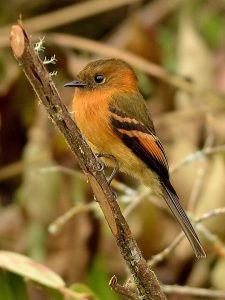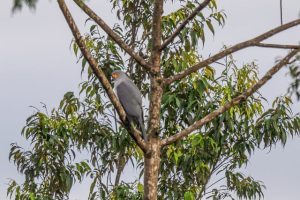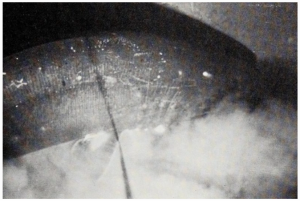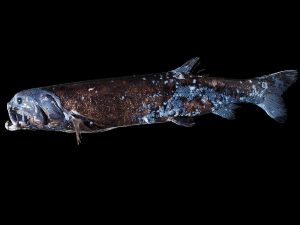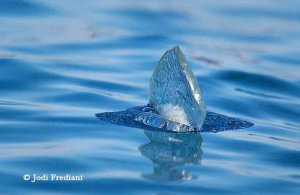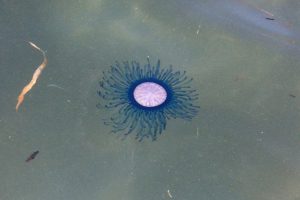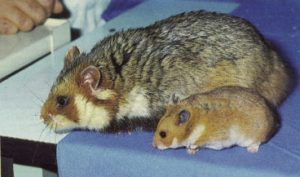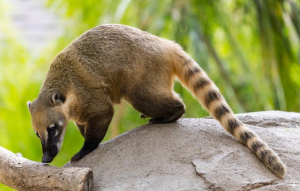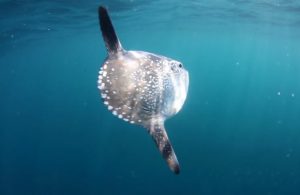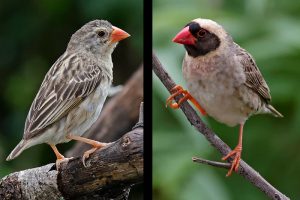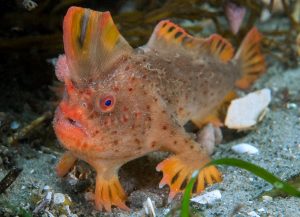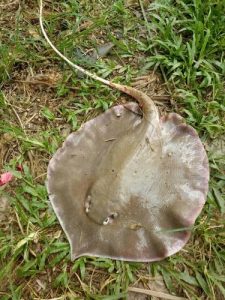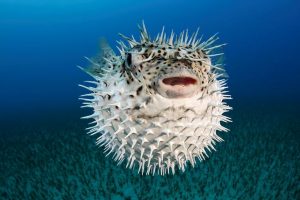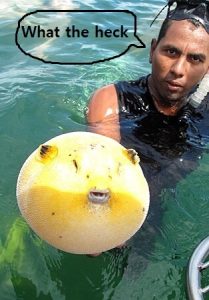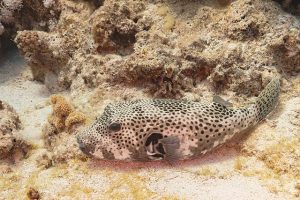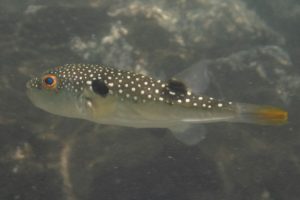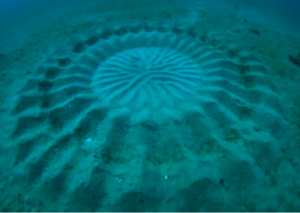Podcast: Play in new window | Download (Duration: 11:02 — 12.4MB)
This week we examine two recent articles about coelacanth discoveries. Which one is real and which one is fake?!
Further reading:
First record of a living coelacanth from North Maluku, Indonesia
A real coelacanth photo:
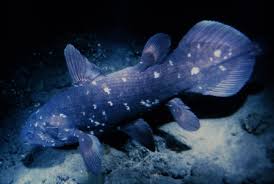
A fake coelacanth photo (or at least the article is a fake) [photo taken from the first article linked above]:
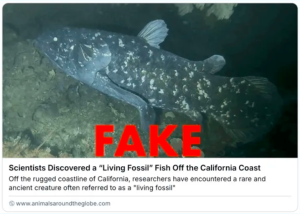
A real coelacanth photo [photo from the second article linked above]:
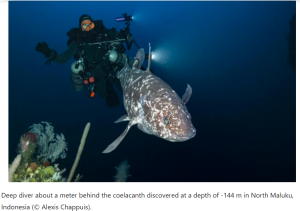
Show transcript:
Welcome to Strange Animals Podcast. I’m your host, Kate Shaw.
I had another episode planned for this week, but then I read an article by geologist Sharon Hill and decided the topic she researched was so important we need to cover it here. No, it’s not the dire wolf—that’s next week. It’s the coelacanth.
We talked about the coelocanth way back in episode two, with updates in a few later episodes. Because episode two is so old that it’s dropped off the podcast feed, and to listen to it you have to actually go to the podcast’s website, I’m going to quote from it extensively here.
In December of 1938, a museum curator in South Africa named Marjorie Courtenay Lattimer got a message from a friend of hers, a fisherman named Hendrick Goosen, who had just arrived with a new catch. Lattimer was on the lookout for specimens for her tiny museum, and Goosen was happy to let her have anything interesting. Lattimer went down to the dock. Then she noticed THE FISH.
It was five feet long, or 1.5 meters, blueish with shimmery silvery markings, with strange lobed fins and scales like armored plates. She described it as the most beautiful fish she had ever seen. She didn’t know what it was, but she wanted it. She took the fish back to the museum in a taxi and went through her reference books to identify it.
Imagine it. She’s flipped through a couple of books but nothing looks even remotely like her fish. Then she turns a page and there’s a picture of the fish–but it’s extinct. It’s been extinct for some 66 million years. But it’s also a very recently alive fish resting on ice in the back of her museum.
Lattimer sketched the fish and sent the drawing and a description to a professor at Rhodes University, J.L.B. Smith. But Smith was on Christmas break and didn’t get her message until January 3rd. In the meantime, Lattimer’s museum director told her the fish was a grouper and not worth the ice it was lying on.
December is the middle of summer in South Africa, so to keep the fish from rotting away, she had it mounted. Then Smith sent her a near-hysterical cable that read, “MOST IMPORTANT PRESERVE SKELETON AND GILLS.” Oops.
Smith got a little obsessed about finding another coelacanth. He offered huge rewards for a specimen. But it wasn’t until December of 1952 that a pair of local fishermen on the island of Anjuan, about halfway between Tanzania and Madagascar, turned up with a fish they called the gombessa. It was a second coelacanth.
Everyone was happy. The fishermen got a huge reward—a hundred British pounds—and Smith had an intact coelacanth. He actually cried when he saw it.
Most people have heard of the coelacanth because its discovery is such a great story. But why is the fish such a big deal?
The coelacanth isn’t just a fish that was supposed to be extinct and was discovered alive and well, although that’s pretty awesome. It’s a strange fish, more closely related to mammals and reptiles than it is to ordinary ray-finned fish. The only living fish even slightly like it is the lungfish, which we talked about in episode 55.
While the coelacanth is unique in a lot of ways, it’s those lobed fins that are really exciting. It’s not a stretch to say its paired fins look like nubby legs with frills instead of digits. Until DNA sequencing in 2013, many researchers thought the coelacanth was a sort of missing link between water-dwelling animals and those that first developed the ability to walk on land. As it happens, the lungfish turns out to be closer to that stage than the coelacanth, and both the lungfish and the coelacanth had already split off from the shared ancestor of marine and terrestrial organisms when they evolved around 400 million years ago. But for scientists in the mid-20th century, studying a fish that looked like it had little legs must have been electrifying.
But this fish story isn’t over yet. In 1997, a marine biologist on honeymoon in Indonesia found a coelacanth in a local market. And it was a different species of coelacanth. Can you imagine a better wedding gift?
Coelacanths are placid fish who do a lot of drifting, although their eight marvelous fins make them very maneuverable. They stay close to the coast and prefer rocky areas. They especially love underwater caves. They hunt for smaller fish and cephalopods like squid at night and rest in caves or hidden among rocks during the day. Sometimes sharks eat them, but for the most part coelacanths lead comfortable lives, floating around eating stuff. Sometimes they float around tail up or even upside down because they just don’t care.
Coelacanths have since been discovered in the western Indian Ocean, off the coast of Madagascar, and a few other places. I finished episode two by saying, “So far, living coelacanths have mostly been found off the coast of Africa, but they’re much more widely spread in the fossil record. Rumors of coelacanths in other places, like the Gulf of Mexico or around Easter Island, keep popping up. Maybe one day another population of these awesome fish will be discovered.”
And in late April 2025, it seemed that my hope had come true. An article was released by a website called Animals Around the Globe, detailing a new discovery of a coelacanth off the coast of San Diego, California!
Now, I missed that article but Sharon Hill didn’t. She’s a geologist whose work I follow and mention here occasionally. She likes to post about cryptids and other mysteries and dig into the real science behind reports, and she suspected right away that there was something fake about the San Diego coelacanth. There’s a link in the show notes to her article, which is worth reading. For one thing, she explains how she did the research to determine whether the article was real.
Her first step was to look for other articles about the finding. Animals Around the Globe isn’t a scientific site, just a blog that posts about animals. A new species of coelacanth, especially one found in North America, would be a HUGE big deal in the scientific community, so there should be lots of articles about it. But Sharon didn’t find anything.
Her next step was to contact the two institutions referenced in the article, the Scripps Institution of Oceanography and the Monterey Bay Aquarium Research Institute. Scripps wrote back first and said the article was a fake. Sharon suspects the article was AI generated. The blog that posted it gets money from advertising, and the more people click through to read the article, the more money they make. That’s why I’m not linking to that article from the show notes.
As it happens, on the same day that that article was published, another article about the coelacanth was published, this one in Nature Scientific Reports. It’s titled “First record of a living coelacanth from North Maluku, Indonesia,” and I do link to it in the show notes because it’s a real sighting and an article written by real scientists, not AI.
In October 2024 a team of scientists were doing deep diving off the coast of North Maluku, Indonesia, on a submerged volcanic slope where they suspected coelacanths were living. It was a dangerous dive because they had to descend so deep, so it required them to use a decompression stage on the way back to the surface. A pair of divers were on their way to the decompression site when they saw a big fish hovering over a boulder. It was a coelacanth that they estimated as being about 5 feet long, or 1.5 meters!
It swam away slowly, but the next morning the divers returned and saw it again. Because coelacanths are gray with a pattern of white dots, and each dot pattern is unique, they knew it was the same fish. They were able to get more photos and video. The most important thing, though, is that while coelacanths have been found in other parts of Indonesia, they hadn’t been found in this particular area. Live individuals also hadn’t ever been seen by actual divers, just ROVs.
The more we know about these amazing fish, the better they can be protected. Fake articles only bring confusion and doubt.
You can find Strange Animals Podcast at strangeanimalspodcast.blubrry.net. That’s blueberry without any E’s. If you have questions, comments, or suggestions for future episodes, email us at strangeanimalspodcast@gmail.com. We also have a Patreon at patreon.com/strangeanimalspodcast if you’d like to support us for as little as one dollar a month and get monthly bonus episodes.
Thanks for listening!
